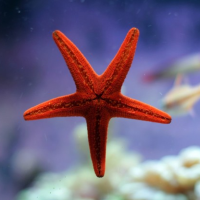“Melting” Starfish Washing up All Along the Coast

A mysterious affliction is killing huge numbers of starfish, causing them to lose their arms and disintegrate in a short period of time.
Divers in Vancouver, British Columbia, first noticed the problem in September, according to NPR station KUOW. “The sick ones tend to just fall apart in front of your eyes,” Vancouver Aquarium biologist Jeff Marliave said. “An arm will actually break off and crawl away. They turn into goo.”
By October, all the starfish in Vancouver Harbor and Howe Sound were gone. “Whatever hit them, it was like wildfire and just wiped them out,” research diver Donna Gibbs told The Canadian Press. The Vancouver Aquarium called it, “Sea Star Wasting Syndrome.”
The starfish develop white lesions, which sometimes become ulcerous, before the disintegration begins. Limbs start falling off within days or weeks.
Large numbers of diseased starfish have been spotted in Santa Cruz, Monterrey and Santa Barbara. A map of outbreaks shows them as far south as Los Angeles.
The disease has been noted before, in Southern California back in the mid-‘80s, according to the Santa Rosa Press Democrat. That one nearly wiped out all the starfish in the area during El Niño. But it was always more localized. This outbreak is not only occurring from Orange County to Alaska on the West Coast of the nation.
A University of Rhode Island graduate student first noticed “melting” starfish in 2011 at Narragansett Bay, one of the first sightings of the disease on the East Coast that eventually was noted from New Jersey to Maine. There was speculation in July that a large increase in the starfish population laid the groundwork for a die-off by stressing food sources and increasing the likelihood of disease transmission.
Starfish are also susceptible to bacterial infections, which can be exacerbated by increasingly warmer water, raising questions about whether global warming is playing a role in the outbreak.
Scientists are just beginning to gather information on the phenomena that have killed up to 95% of starfish in some tide pools. A monitoring website run by the University of California, Davis, says the first West Coast sightings this year were in the summer and, “The ultimate cause is not clear.”
There are many varieties of starfish, but the Press Democrat said, so far, the species Pisaster ochraceus appears to be the one primarily affected. The species pays a critical role in biological diversity by eating animals like mussels that tend to crowd out other aquatic creatures. They are considered a Keystone species because of the crucial role they play in the ecosystem.
–Ken Broder
To Learn More:
Wasting Disease Devastating Starfish Along Sonoma Coast (by Guy Kovner, Santa Rosa Press Democrat)
Mass Starfish Die-off May be Headed for Washington (by John Ryan, KUOW)
What's Eating the Starfish? Mystery Rot Threatens Populations on Both Coasts (by Nidhi Subbaraman, NBC News)
Vancouver Aquarium “Alarmed” at Mass Die-off of Starfish on B.C. Ocean Floor (by Dene Moore, The Canadian Press)
Sea Star Wasting Syndrome (University of California, Santa Cruz)
- Top Stories
- Controversies
- Where is the Money Going?
- California and the Nation
- Appointments and Resignations
- Unusual News
- Latest News
- California Forbids U.S. Immigration Agents from Pretending to be Police
- California Lawmakers Urged to Strip “Self-Dealing” Tax Board of Its Duties
- Big Oil’s Grip on California
- Santa Cruz Police See Homeland Security Betrayal in Use of Gang Roundup as Cover for Immigration Raid
- Oil Companies Face Deadline to Stop Polluting California Groundwater





